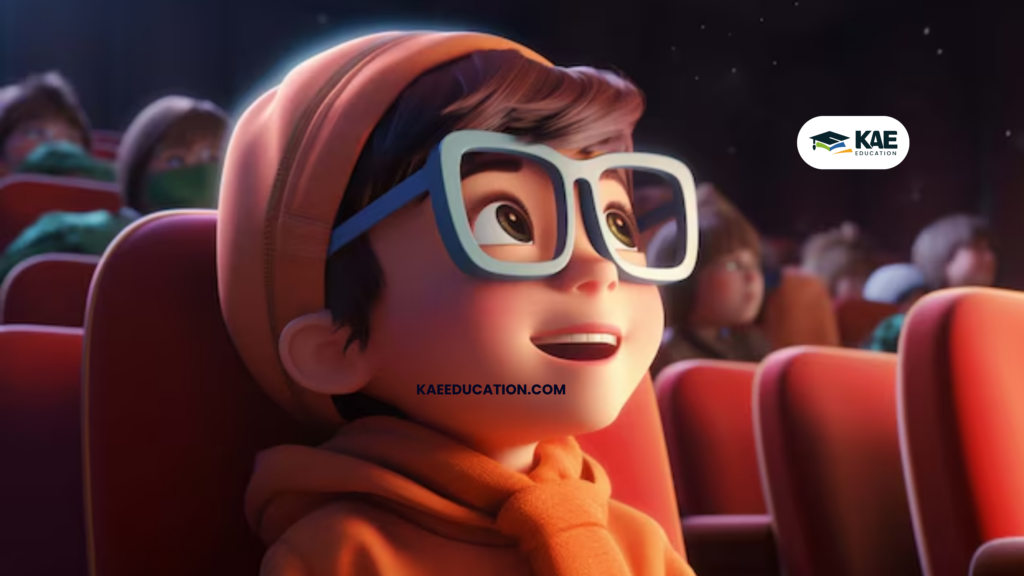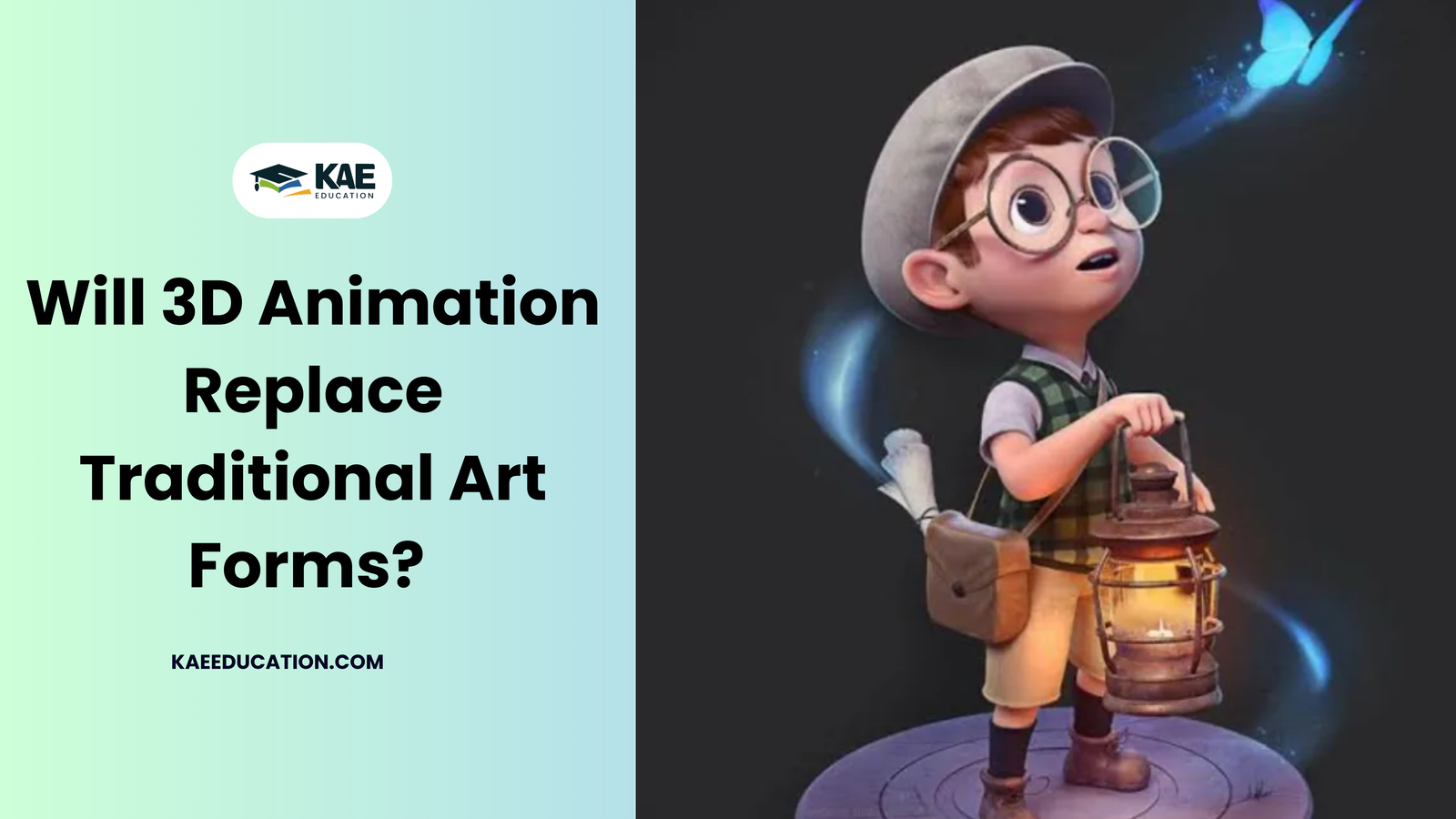Will 3D Animation Replace Traditional Art Forms?
The world of 3D Animation has rapidly expanded, with digital technology advancing at an unprecedented rate. From feature films to video games, this form of animation has become a cornerstone of modern entertainment and design. But as 3D graphics continues to dominate Industries, many are asking: Will it replace traditional art forms such as painting, sculpture, or hand-drawn animation?
In this blog, we explore how 3D graphics is changing the artistic landscape and whether it will eventually overshadow traditional art forms or simply coexist with them.
Understanding 3D Animation and Traditional Art Forms
3D graphics/ Animation refers to the creation of moving images in a three-dimensional digital space, usually with the help of powerful software like Autodesk Maya, Blender, or Cinema 4D. This process involves modeling objects, rigging them with bones and joints, animating movement, and rendering them into a final product.
On the other hand, traditional art forms—such as painting, drawing, sculpture, and hand-drawn animation—are created through physical materials like Canvas, Clay, and Pencil. These forms of art are often seen as timeless, with deep historical roots that have shaped human creativity for centuries.
Why 3D graphics Is Gaining Ground
(1) Technological Advancements
(i) 3D graphics has grown due to the rise of advanced technology. With more accessible software and hardware, it’s easier than ever for creators to produce highly detailed, lifelike animations.
(ii) The growing demand for interactive media such as virtual reality (VR), video games, and online content has made 3D graphics a natural fit for modern storytelling.
(2) Immersive Experiences
(i) The ability of 3D graphics to create entire worlds and lifelike characters makes it a key player in modern visual storytelling. Movies like Avatar and video games like The Witcher showcase how 3D graphics can immerse audiences in expansive, dynamic environments.
(ii) Traditional art forms, while still highly respected, often can’t match the level of immersion that 3D graphics offers.

(3) Versatility Across Industries
(i) Beyond entertainment, 3D Animation is also making waves in Industries like Advertising, Architecture, and Education. From realistic simulations to eye-catching marketing campaigns, 3D graphics can be used in a wide range of applications.
(ii) Traditional art forms, on the other hand, are more confined to specific industries or purposes, making 3D graphics more versatile in today’s market.
Will Traditional Art Forms Be Replaced by 3D Animation?
While 3D Animation offers many advantages, the idea that it will replace traditional art forms is highly unlikely. Instead, these two realms of creativity are likely to coexist and complement each other. Here’s why:
(1) Traditional Art Forms Have Timeless Appeal
(i) There’s an emotional connection to traditional art that 3D graphics can’t replicate. The unique texture of a hand-painted canvas or the tactile feel of a sculpture carries a sense of history, craftsmanship, and soul that 3D graphics cannot emulate.
(ii) Many art lovers appreciate the imperfections and spontaneity found in traditional works, which create a human connection that 3D Animation might lack.
(2) New Technologies Enhancing Traditional Art
(i) With the advent of digital tools, traditional artists are now incorporating 3D graphics into their processes. Sculptors and painters use 3D modeling to visualize their work before it’s made, and animators now use a hybrid approach to blend hand-drawn artistry with 3D Animation for unique results.
(ii) Rather than replacing traditional art, 3D Animation is enhancing its capabilities and expanding what artists can do.
(3) The Creative Power of Both Worlds
(i) Traditional art forms allow for more personal expression and interpretation. A hand-drawn sketch can convey a rawness and intimacy that 3D Animation might struggle to express.
(ii) On the other hand, 3D Animation allows for large-scale projects with intricate details that are simply impossible in traditional mediums.
Conclusion: A Harmonious Coexistence
While 3D Animation is undoubtedly revolutionizing the entertainment Industry and beyond, it is unlikely to replace traditional art forms. Instead, 3D Animation and traditional art are likely to evolve together, each enhancing the other. Artists today have more tools than ever to express their creativity, whether through the timeless nature of traditional methods or the cutting-edge possibilities of 3D Animation.
In the future, the creative worlds of 3D Animation and traditional art will merge, creating new and exciting forms of expression. So, rather than replacing traditional art, 3D Animation will continue to complement and elevate it, bringing a dynamic, interactive dimension to the world of art and creativity.
FAQs About 3D Animation and Traditional Art Forms
No, 3D Animation will not replace traditional art. Instead, both will continue to coexist, with 3D Animation enhancing the creative process and expanding artistic possibilities.
Yes, many traditional artists use 3D graphics as a tool to complement their work, enhancing their creative process with digital modeling and animation.
3D Animation is used in Entertainment, Video Games, Architecture, Advertising, Education, Virtual reality, and more. Its versatility is a major reason for its growth in the digital age.
3D graphics has become more accessible due to free and affordable software options, but it does require a steep learning curve and powerful computing resources. Traditional art forms are still more easily accessible to beginners.
The main advantage of 3D Animation is its ability to create immersive, interactive, and dynamic visuals that are highly adaptable to a wide range of Industries.
Many contemporary artists are blending 3D Animation with traditional techniques, such as augmented reality art or 3D-printed sculptures, showcasing the fusion of both mediums.
Yes, 3D graphics still requires a significant amount of artistic skill, including an understanding of composition, lighting, and design, along with technical knowledge of the software used to create the animation.

